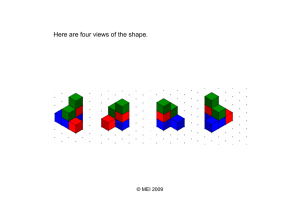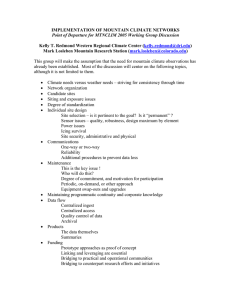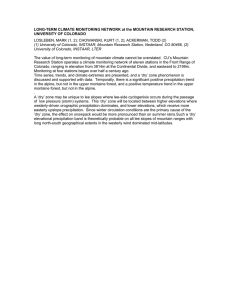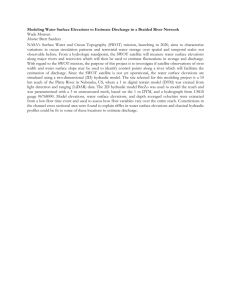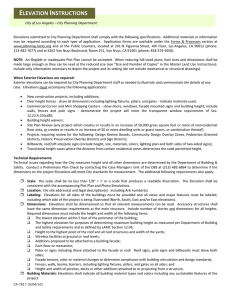A High Elevation Climate Monitoring Network: Strategy and Progress
advertisement
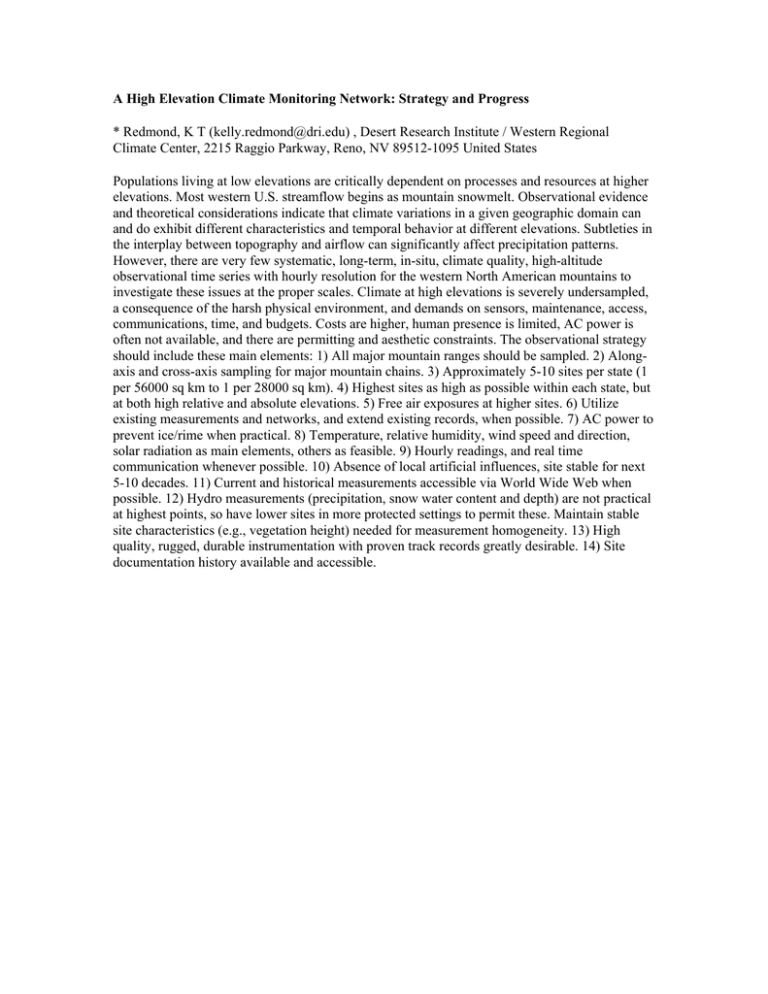
A High Elevation Climate Monitoring Network: Strategy and Progress * Redmond, K T (kelly.redmond@dri.edu) , Desert Research Institute / Western Regional Climate Center, 2215 Raggio Parkway, Reno, NV 89512-1095 United States Populations living at low elevations are critically dependent on processes and resources at higher elevations. Most western U.S. streamflow begins as mountain snowmelt. Observational evidence and theoretical considerations indicate that climate variations in a given geographic domain can and do exhibit different characteristics and temporal behavior at different elevations. Subtleties in the interplay between topography and airflow can significantly affect precipitation patterns. However, there are very few systematic, long-term, in-situ, climate quality, high-altitude observational time series with hourly resolution for the western North American mountains to investigate these issues at the proper scales. Climate at high elevations is severely undersampled, a consequence of the harsh physical environment, and demands on sensors, maintenance, access, communications, time, and budgets. Costs are higher, human presence is limited, AC power is often not available, and there are permitting and aesthetic constraints. The observational strategy should include these main elements: 1) All major mountain ranges should be sampled. 2) Alongaxis and cross-axis sampling for major mountain chains. 3) Approximately 5-10 sites per state (1 per 56000 sq km to 1 per 28000 sq km). 4) Highest sites as high as possible within each state, but at both high relative and absolute elevations. 5) Free air exposures at higher sites. 6) Utilize existing measurements and networks, and extend existing records, when possible. 7) AC power to prevent ice/rime when practical. 8) Temperature, relative humidity, wind speed and direction, solar radiation as main elements, others as feasible. 9) Hourly readings, and real time communication whenever possible. 10) Absence of local artificial influences, site stable for next 5-10 decades. 11) Current and historical measurements accessible via World Wide Web when possible. 12) Hydro measurements (precipitation, snow water content and depth) are not practical at highest points, so have lower sites in more protected settings to permit these. Maintain stable site characteristics (e.g., vegetation height) needed for measurement homogeneity. 13) High quality, rugged, durable instrumentation with proven track records greatly desirable. 14) Site documentation history available and accessible.

